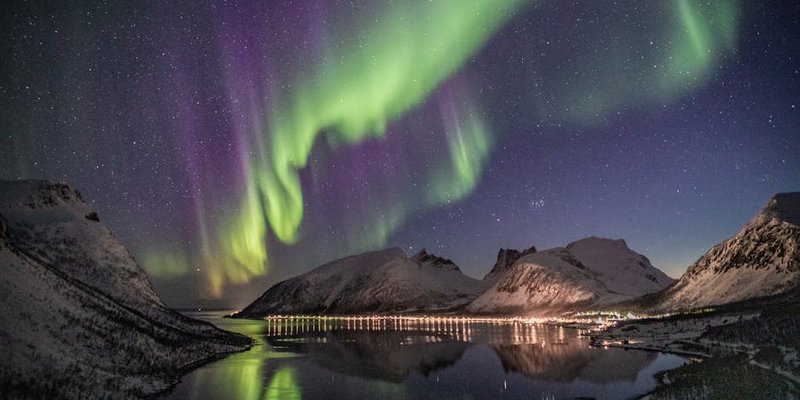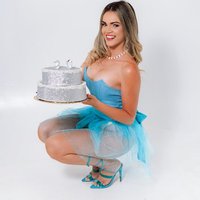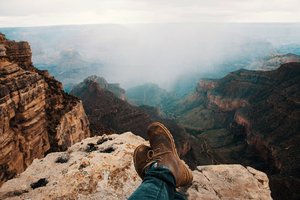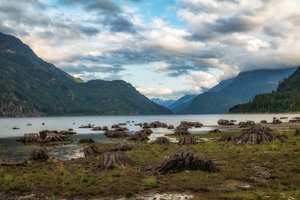The aurora borealis, commonly known as the Northern Lights, is one of nature's most spectacular displays. These dancing lights in the night sky have captivated humans for centuries, inspiring myths, legends, and a sense of wonder. For many travelers, witnessing this magnificent phenomenon is a bucket-list experience—and Canada offers some of the best viewing opportunities in the world.
As someone who has spent years guiding aurora tours across Canada's northern territories, I've had the privilege of watching countless faces light up with awe as the sky comes alive with color. In this guide, I'll share everything you need to know about seeing the Northern Lights in Canada, from the science behind the spectacle to the best locations and times for optimal viewing.
What Causes the Northern Lights?
Before we dive into the where and when, it's helpful to understand what creates this celestial light show. The Northern Lights begin with solar flares—massive explosions on the sun's surface that release charged particles into space. When these particles reach Earth, they interact with our planet's magnetic field, which channels them toward the poles.
As these charged particles collide with gases in our atmosphere, they release energy in the form of light. Different gases produce different colors: oxygen creates the most common green auroras, as well as the rarer red displays, while nitrogen produces blue and purple hues. The result is a dynamic, swirling lightscape that can appear as arcs, curtains, spirals, or flickers across the night sky.
Best Time to See the Northern Lights in Canada
Timing is crucial when planning an aurora-viewing trip. Here's what you need to know:
Season
While the Northern Lights are active year-round, they're only visible in dark skies. In Canada's northern regions, the prime viewing season runs from late August to early April when nights are longest. The absolute peak months are December through March, when darkness dominates and skies tend to be clearer.
Time of Night
The most active period typically falls between 10 PM and 2 AM local time, though displays can occur anytime during dark hours. For serious aurora hunters, be prepared to stay up late—the best shows often happen around midnight.
Solar Cycle
The sun follows an approximately 11-year cycle of activity. During solar maximum (the period of greatest solar activity), auroras are more frequent and intense, and can be seen farther south than usual. Good news for would-be viewers: we're currently approaching a solar maximum expected to peak in 2024-2025, making the next few years excellent for aurora viewing.
Pro Tip
Download an aurora forecast app like "My Aurora Forecast" or "Aurora Alert" to receive notifications when conditions are favorable. These apps use real-time data to predict aurora activity and can be invaluable tools for planning your viewing.
Top Canadian Destinations for Northern Lights
1. Yukon Territory
The Yukon offers some of Canada's most accessible aurora viewing opportunities, with Whitehorse serving as an excellent base. Just a short drive from the city takes you to dark-sky areas perfect for aurora watching. For a truly immersive experience, consider staying at the Northern Lights Resort & Spa, which offers specialized aurora viewing packages.
Best spots near Whitehorse: Lake Laberge, Fish Lake Road, and the Takhini Hot Springs Road area.
2. Northwest Territories
Yellowknife has earned its reputation as the "Aurora Capital of North America" for good reason. Located directly beneath the aurora oval (the ring-shaped region where auroras are most common), it experiences aurora activity on over 240 nights per year. The city offers numerous tour operators specializing in aurora viewing, from simple transportation to full photography workshops.
Best spots near Yellowknife: Prelude Lake, Aurora Village, and the Ingraham Trail.
3. Northern Manitoba
Churchill, Manitoba is renowned for its polar bears, but it's equally impressive for Northern Lights viewing. Located beneath the aurora oval, Churchill offers stunning displays over the vast tundra landscape and sometimes even over the frozen Hudson Bay.
4. Northern Alberta
Wood Buffalo National Park and Fort McMurray offer excellent viewing opportunities further south. The park is the world's largest dark sky preserve, making it perfect for not just aurora viewing but stargazing in general.
5. Nunavut
For the truly adventurous, Iqaluit and other communities in Nunavut offer spectacular aurora viewing in a remote Arctic setting. Here, you can experience the lights dancing over frozen landscapes virtually untouched by light pollution.
Important Note
Northern communities often have limited accommodations that book up quickly during aurora season. We recommend securing your lodging 6-12 months in advance, especially if traveling during peak winter months.
Preparing for Your Northern Lights Adventure
What to Wear
Aurora viewing in Canadian winter requires serious preparation. You'll be standing relatively still in potentially extreme cold for extended periods. Layer up with:
- Base layer: Merino wool or synthetic thermal underwear
- Mid layer: Fleece or down jacket for insulation
- Outer layer: Windproof and waterproof parka and snow pants
- Extremities: Insulated boots rated for at least -30°C, wool socks, insulated mittens (warmer than gloves), and a warm hat that covers your ears
- Face protection: Balaclava or scarf to protect your face from freezing temperatures
Photography Tips
Want to capture the Northern Lights? Here's what you'll need:
- A camera with manual settings (DSLR or mirrorless preferred)
- A wide-angle lens with a fast aperture (f/2.8 or wider)
- A sturdy tripod (essential for long exposures)
- Extra batteries (cold temperatures drain batteries quickly)
- Remote shutter release or self-timer to avoid camera shake
Recommended camera settings to start with:
- ISO: 1600-3200 (adjust based on brightness of the aurora)
- Aperture: The widest your lens allows (lowest f-number)
- Shutter speed: 5-15 seconds (longer for fainter displays, shorter for bright, active ones)
- Manual focus set to infinity (autofocus struggles in dark conditions)
Cultural Significance
The Northern Lights hold profound cultural significance for many Indigenous peoples across Canada. The Cree call the aurora the "Dance of the Spirits" and believe they represent the souls of ancestors. The Inuit have various legends, including one that describes the lights as the spirits of animals and humans playing a celestial ball game with a walrus skull.
When visiting northern communities, take time to learn about local perspectives on the aurora. Many Indigenous-led tours offer not just viewing opportunities but cultural context that enriches the experience.
Our Northern Lights Expedition
At Pitomee Travel Agency, we offer specialized Northern Lights tours that combine the best viewing opportunities with comfortable accommodations and expert guides. Our 7-day Yukon Aurora Expedition includes:
- Professional photography guidance to help you capture perfect aurora images
- Heated viewing facilities for comfort during long observation periods
- Daytime activities including dogsledding, ice fishing, and cultural experiences
- Accommodation in our aurora-viewing cabins with north-facing windows and wake-up calls when the lights appear
Our guides are trained in both the scientific aspects of the aurora and the cultural significance to Indigenous peoples, providing a holistic experience that goes beyond just viewing the lights.
Insider Tip
The best aurora displays often occur after midnight, when many tour groups have returned to their hotels. Our overnight tours include comfortable heated viewing shelters with reclining chairs, hot beverages, and snacks, allowing you to enjoy extended viewing in comfort.
Final Thoughts
Seeing the Northern Lights is an experience that stays with you long after you've returned home. There's something indescribably moving about watching the sky come alive with dancing color in the deep silence of a northern winter night. It connects us to something larger than ourselves—to ancient human experiences of wonder, to the vast cosmos, and to the dynamic relationship between our sun and Earth.
While there's never a guarantee you'll see the aurora (nature follows its own schedule), proper planning can maximize your chances. Remember that patience is key. Sometimes the best displays happen after hours of waiting, or on the night you least expect it.
Whether you're a photographer seeking the perfect shot, an adventure traveler checking off a bucket-list item, or simply someone seeking connection with one of nature's most magnificent phenomena, Canada offers some of the world's best opportunities to experience the magic of the Northern Lights.
Ready to plan your aurora adventure? Contact our team at Pitomee Travel Agency for personalized advice and booking assistance for your Northern Lights expedition.



